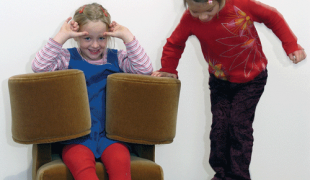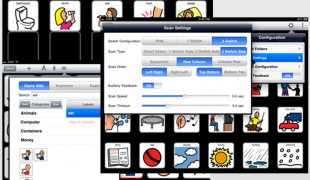- 7930
- 359
- 8
- 9
- 0
- Help Ukraine
About the solution
“I was able to overcome autism because I had good teachers”, Temple said.
She wrote these notes on how to teach autistic people:
“1) Many people with autism are visual thinkers.
2) Avoid long strings of verbal instructions.
3) Many children with autism are good at drawing, art and computer programming. These talent areas should be encouraged.
4) Many autistic children get fixated on one subject such as trains and maps. The best way to deal with fixations is to use them to motivate school work.
5) Use concrete visual methods to teach number concepts.
7) Some autistic children will learn reading more easily with phonics, and others will learn best by memorizing whole words.
8) When I was a child, loud sounds like the school bell hurt my ears like a dentist drill hitting a nerve. Children with autism need to be protected from sounds that hurt their ears.
10) Some hyperactive autistic children who fidget all the time will often be calmer if they are given a padded weighted vest to wear.
11) Some individuals with autisms will respond better and have improved eye contact and speech if the teacher interacts with them while they are swinging on a swing or rolled up in a mat.
12) Some children and adults can sing better than they can speak.
13) Some nonverbal children and adults cannot process visual and auditory input at the same time.
14) In older nonverbal children and adults touch is often their most reliable sense. It is often easy for them to feel.
15) Some children and adults with autism will learn more easily if the computer keyboard is placed close to the screen.
16) Nonverbal children and adults will find it easier to associate words with pictures if they see the printed word and a picture on a flashcard”.
Temple also wrote many books on how to deal with Autism and Asperger’s.
More info: http://www.templegrandin.com/
Adapted from: http://bit.ly/2hdi7PY
What about you, do you have any solutions? Please share them with the Patient Innovation community!
This solution shall not include mention to the use of drugs, chemicals or biologicals (including food); invasive devices; offensive, commercial or inherently dangerous content. This solution was not medically validated. Proceed with caution! If you have any doubts, please consult with a health professional.
DISCLAIMER: This story was written by someone who is not the author of the solution, therefore please be advised that, although it was written with the utmost respect for the innovation and the innovator, there can be some incorrect statements. If you find any errors please contact the patient Innovation team via info@patient-innovation.com
-
-
773
-
0
-
18017

System to track autistic children
CAREGIVING
COMMUNICATION: Communicating, whether by speaking, listening, or other means
Social interaction
Autism
Assistive Daily Life Device (to help ADL)
Body-Worn solutions (Clothing, accessories, shoes, sensors...)
App (Including when connected with wearable)
Anxiety
Difficulty concentrating or making decisions
Social withdrawal or isolation
Restlessness or feeling slowed down
Loss of interest or pleasure in activities (anhedonia)
Promoting self-management
Managing Neurological Disorders
Preventing (Vaccination, Protection, Falls, Research/Mapping)
Caregiving Support
Child and Adolescent Psychiatry
Medical Genetics
Neurology
Pediatrics
Psychiatry
Israel
-
-
-
439
-
0
-
16994

The squeeze chair project
-
-
-
563
-
6
-
14447

App to teach communication
COMMUNICATION: Communicating, whether by speaking, listening, or other means
CAREGIVING
Autism
Cerebral Palsy
Angelman's Syndrome
Rett’s Syndrome
Website
Social withdrawal or isolation
Difficulty speaking or understanding speech
Promoting self-management
Building Supportive Community Relationships
Promoting inclusivity and social integration
Improving Speech and Communication
Caregiving Support
Child and Adolescent Psychiatry
General and Family Medicine
Neurology
Pediatrics
United States
-
 en
en